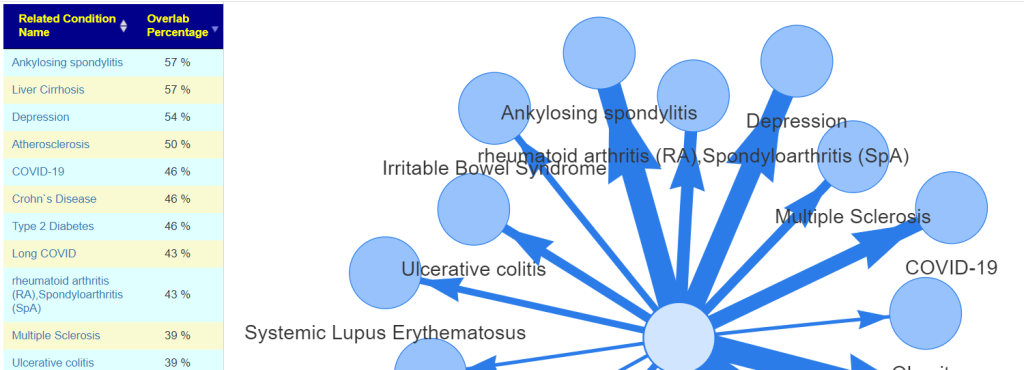This builds on Medical Conditions with Microbiome Shifts from US National Library of Medicine page where the bacteria shifts for various conditions are summarized. The question often is asked, “Did my Asthma caused my depression?” or other mixtures.
If the US had a unified medical system recording information from birth until the grave, then such questions can be answered by some database queries by a skilled statistician. Unfortunately, that is not the case and access to such data is often challenging because of privacy laws.
There is an approach that may hint at answers. Look at the bacteria and direction of shifts reported for various conditions and see if there are good matches. For example, you have 10 of the shifts seen for being afraid of dogs and there are 15 shifts seen in people that are afraid of pets. You would appear to be 10/15 = 66% of the way to that other condition.
The challenge is sparse data. For some conditions we have had lots of microbiome studies and for others almost none. We can view it as shown below.

The more the bacteria are in common, the more likely you may drift from one condition to another — often added as a co-morbid condition.
Looking at this data is available on the Medical Conditions with Microbiome Shifts from US National Library of Medicine page

Clicking will take you to a page that lists the percentage overlap and show a visualization with arrows thickness reflecting the percentage overlap. Remember that many conditions also require DNA mutations to cause the condition. This is NOT predictive, merely a factor to consider.

At the top, you can pick a different condition, set the percentage association to show (the lower the amount, the more items will appear and you may get a very busy page). Or, go over to every thing on one page.
Looking at what could cause Asthma, we see the key contributors.

When you hover over the line, you will get more information, for example Chronic Lyme. We see that we only have 3 bacteria types/taxon listed for Chronic Lyme (at this time),

Looking at Sleep Apnea, we see more bacteria are known about it.

You must balance the number of bacteria (taxons) with the percentage. High taxon counts with high percentage are likely significant. The issue keeps coming down to few studies on microbiome shifts.
Note: The numbers and charts will change over time as more data is found and entered.
Recent Comments